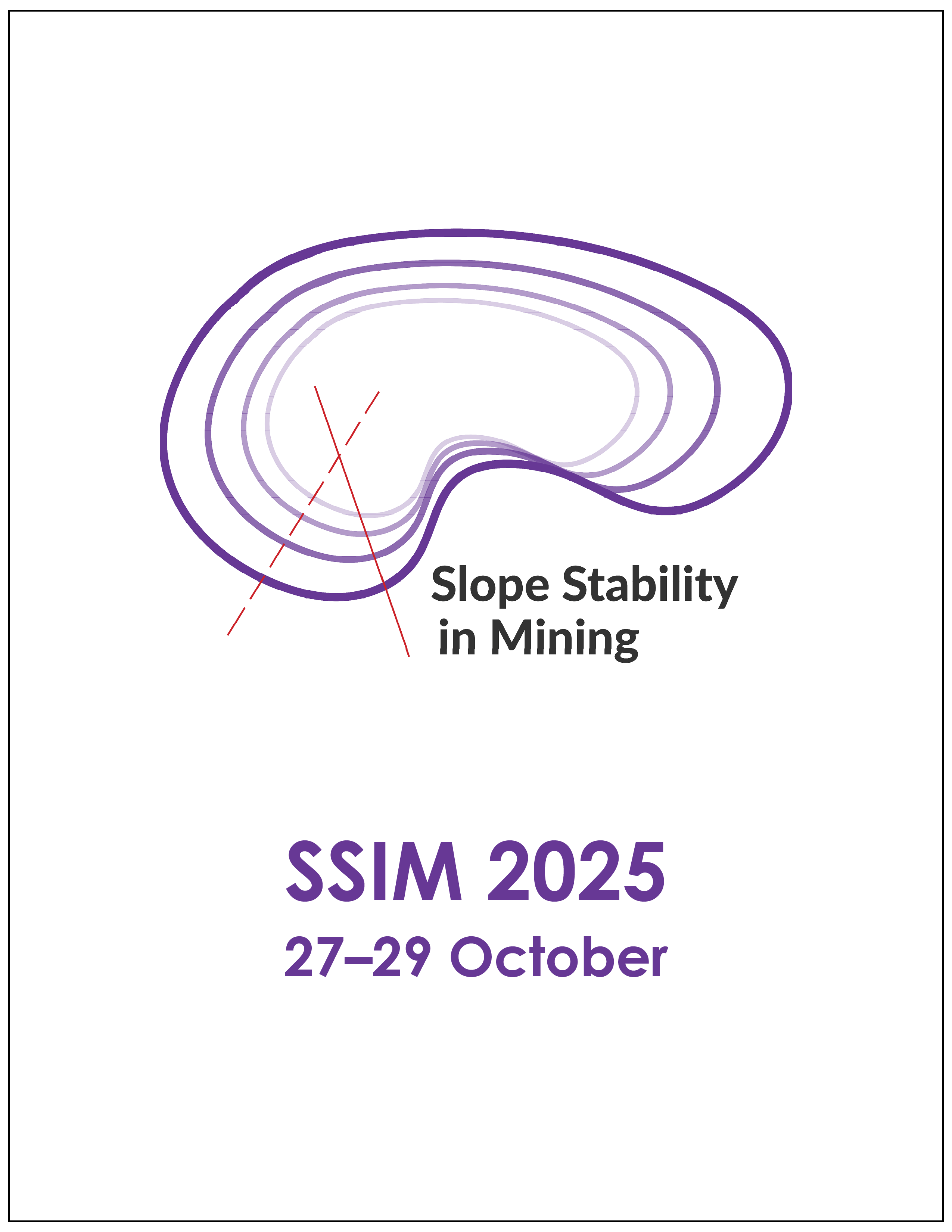Automatic multi-stage slow movement analysis for early warning monitoring systems for surface mining

|
Authors: Calderon, J; Barnes, R; Shilov, E |
DOI https://doi.org/10.36487/ACG_repo/2535_50
Cite As:
Calderon, J, Barnes, R & Shilov, E 2025, 'Automatic multi-stage slow movement analysis for early warning monitoring systems for surface mining', in JJ Potter & J Wesseloo (eds), SSIM 2025: Fourth International Slope Stability in Mining Conference, Australian Centre for Geomechanics, Perth, https://doi.org/10.36487/ACG_repo/2535_50
Abstract:
The development of processing techniques for radar monitoring data has significantly aided geotechnical practitioners in managing slope stability risks, especially when the radar system operates in real-time. Notable improvements have been made to address weather conditions and understand velocity behaviour to predict slope failure once the velocity measured on the slope becomes evident, using a real-time radar-based system. Real-time radar monitoring using interferometry principles has limitations regarding measurable velocities. The maximum measurable velocity is typically constrained by phase ambiguity, mainly due to the radar frequency and the minimum time between scans. In the lower band, the minimum measurable velocity is limited by the instrument’s precision. This work aims to establish a system that enables geotechnical practitioners to monitor the behaviour of lowvelocity ranges using different calculation periods for slow movement analysis, in a practical and automatic manner. This approach detects potential slope failures with minimal displacement rates, enhancing control effectiveness and operational continuity. Geotechnical engineers can inform potential slope stability issues significantly earlier compared to real-time systems for ground-based radars. The new approach, called automatic multi-stage slow movement analysis, captures different ranges of lower band velocities. It automates data visualisation in parallel with real-time monitoring to detect displacement from natural slope deconfinement processes to initial indications of potential failures. This work details the pilot, methodology, and testing – using actual cases within BHP operations – highlighting the benefits of understanding initial slope deformations that are typically undetectable using real-time settings.
Keywords: monitoring automation, geotechnical monitoring system, slow movement analysis, slope performance, geotechnical monitoring, monitoring integration, ground-based radar, thresholds, interferometry
References:
Calderon, J & Barnes, R 2025, ‘Threshold assessment of low displacement rates using ground-based radar data for slope deformation and early warnings of slope failures through slow movement analysis’, in JJ Potter & J Wesseloo (eds), SSIM 2025: Proceedings of the Fourth International Slope Stability in Mining Conference, Australian Centre for Geomechanics, Perth.
Crouse, RL & Wines, DR 2016, ‘Cowal gold mine — documentation of slope deformations due to mining to final pit walls — a case history’, in PM Dight (ed.), APSSIM 2016: Proceedings of the First Asia Pacific Slope Stability in Mining Conference, Australian Centre for Geomechanics, Perth, pp. 107–126,
IDS Georadar 2018, IBIS Slope Monitoring Focus on Slow Deformation Course, Pisa.
Leoni, L, Coli, N, Farina, P, Coppi, F, Michelini, A, Costa, TA, Costa, TAV & Costa, F 2015, ‘On the use of ground-based synthetic aperture radar for long-term slope monitoring to support the mine geotechnical team’, in PM Dight (ed.), FMGM 2015: Proceedings of the Ninth Symposium on Field Measurements in Geomechanics, Australian Centre for Geomechanics, Perth,
Lowry, B, Gomez, F, Zhou, W & Mooney, M 2013, ‘High resolution displacement monitoring of a slow velocity landslide using ground based radar interferometry’, Engineering Geology, vol. 166, pp. 160–169.
Michelini, A, Coli, N, Coppi, F & Farina, P 2014, ‘Advanced data processing of ground-based synthetic aperture radar for slope monitoring in open pit mines’, Proceedings of the 48th US Rock Mechanics/Geomechanics Symposium, American Rock Mechanics Association, Eaton.
Peryoga, T, Setiadi, B, Ursulic, A, Ziusudras, S & Earle, J 2023, ‘Investigating potential long-term geotechnical risks with slow movement analysis’, in PM Dight (ed.), SSIM 2023: Third International Slope Stability in Mining Conference, Australian Centre for Geomechanics, Perth, pp. 793–802,
Shilov, E & Tovey, L 2025, ‘Geotechnical and technology partnerships in the mining industry: ensuring availability of operational data’, in JJ Potter & J Wesseloo (eds), SSIM 2025: Proceedings of the Fourth International Slope Stability in Mining Conference, Australian Centre for Geomechanics, Perth.
Tovey, L, Dixon, R, Morgan, M & Shilov, E 2023, ‘Rocks around the clock: a 24/7 approach to radar slope monitoring’, in PM Dight (ed.), SSIM 2023: Third International Slope Stability in Mining Conference, Australian Centre for Geomechanics, Perth,
Yang, H, Peng, J & Zhang, D 2011 ‘Slope of large-scale open-pit mine monitoring deformations by using ground-based interferometry’, Proceedings of the Joint International Symposium on Deformation Monitoring, International Federation of Surveyors, Copenhagen.
© Copyright 2025, Australian Centre for Geomechanics (ACG), The University of Western Australia. All rights reserved.
View copyright/legal information
Please direct any queries or error reports to repository-acg@uwa.edu.au
View copyright/legal information
Please direct any queries or error reports to repository-acg@uwa.edu.au

